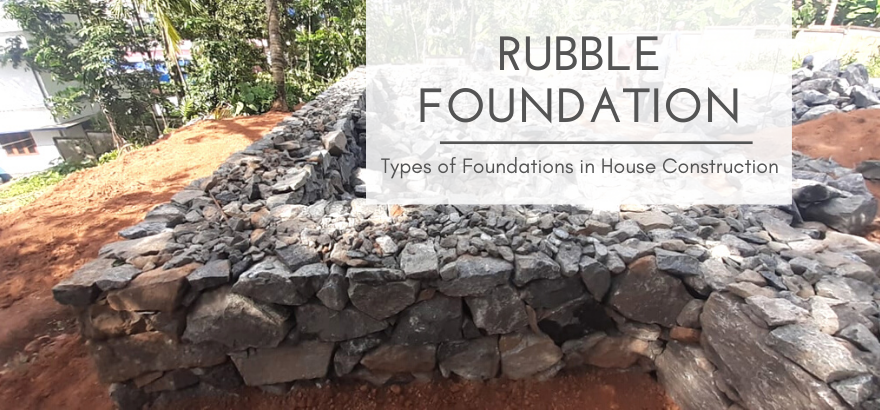We have already seen the importance of foundation in building construction. We have also briefly touched upon the different types of foundations commonly used. Now we look at the different types of construction in much more detail.
We can broadly classify Foundations into two – deep foundations and shallow foundations.
If the depth of the foundation is lower than its width, we call it a shallow foundation. Here the bearing capacity of the soil is high enough to take the load of the building. The minimum depth of a shallow foundation is 800mm and the maximum depth is 3m.
Deep foundation is used in cases where the surface soil is not strong enough to take the load of the building. In such cases, we should provide additional support for the building by transferring the load of the building to the deeper layers of the soil that have higher bearing capacity. In deep foundations, the depth of the foundation will be more than its width.
Let’s start with a very simple type of foundation – the Rubble foundation.
What is Rubble Foundation?
A rubble foundation or a rubble trench foundation is most appropriate when the underlying soil condition is strong. It is a continuous arrangement of stones in a trench around the perimeter of the house. The purpose of this rubble trench foundation is to transfer the weight of the building above and distribute it evenly to the ground. Therefore, as mentioned earlier, it becomes all the more important that you make use of this type of foundation only when the soil below is strong enough to take the weight of the building.
How to do Rubble Foundation? A step by step approach
Now let’s look at the step by step process of laying the rubble foundation.
- The first step in any kind of foundation, after the marking and set out process is earth excavation.
- We use an earth excavator to perform the excavation. Excavation is done till hard strata is reached.
- Removal of earth and trench levelling is done manually. The next step is to clean the trench.
- Plain Cement Concrete (PCC) of thickness 10cm is placed inside the trench as the bottom layer. However, as the rubble foundation is done only when the soil condition is strong, this step can be omitted. Your structural engineer would be the best person to decide whether your foundation requires the PCC layer or not.
- Large blocks of stones are placed inside the trench. While choosing the stones, it is important to choose stones that are similar in shape. Wedge-shaped stones are inserted using hammers in between the stones to fill the gaps. However, you do not use cement at this stage. This is known as Dry Rubble (DR). Dry Rubble is usually done in that part of the rubble foundation that rests under the soil.
- A single layer of mortar is then applied over the dry rubble and is levelled.
- The next stage is called Random Rubble (RR). Stones are packed together just as in DR. However at this stage, the stones are held together in place using mortar. It is very important that you mix the mortar at the correct proportions to achieve optimum strength. The recommended proportions of cement: sand is 1:6. Random Rubble is done above the ground level.
- Finally, the foundation is made even. Then apply a layer of mortar on the top.
- The string method using water level is used to ensure that the entire foundation is at the same height.
- After the foundation is completed, it has to undergo curing for 3 days.
- The next step is to fill the foundation with earth. Water is added and the earth is treated well until it hardens.
- We are now ready for the next step, DPC or Damp Proof Concrete
Advantages of Rubble Trench Foundation
- Less expensive compared to the other methods
- Environment friendly
- Enables good soil drainage. Since the stone is resistant to moisture, it will not be damaged by groundwater.
- The rubble which is used in this type of foundation has excellent strength and stands out in durability and reliability.
- Suitable for all climatic conditions.

